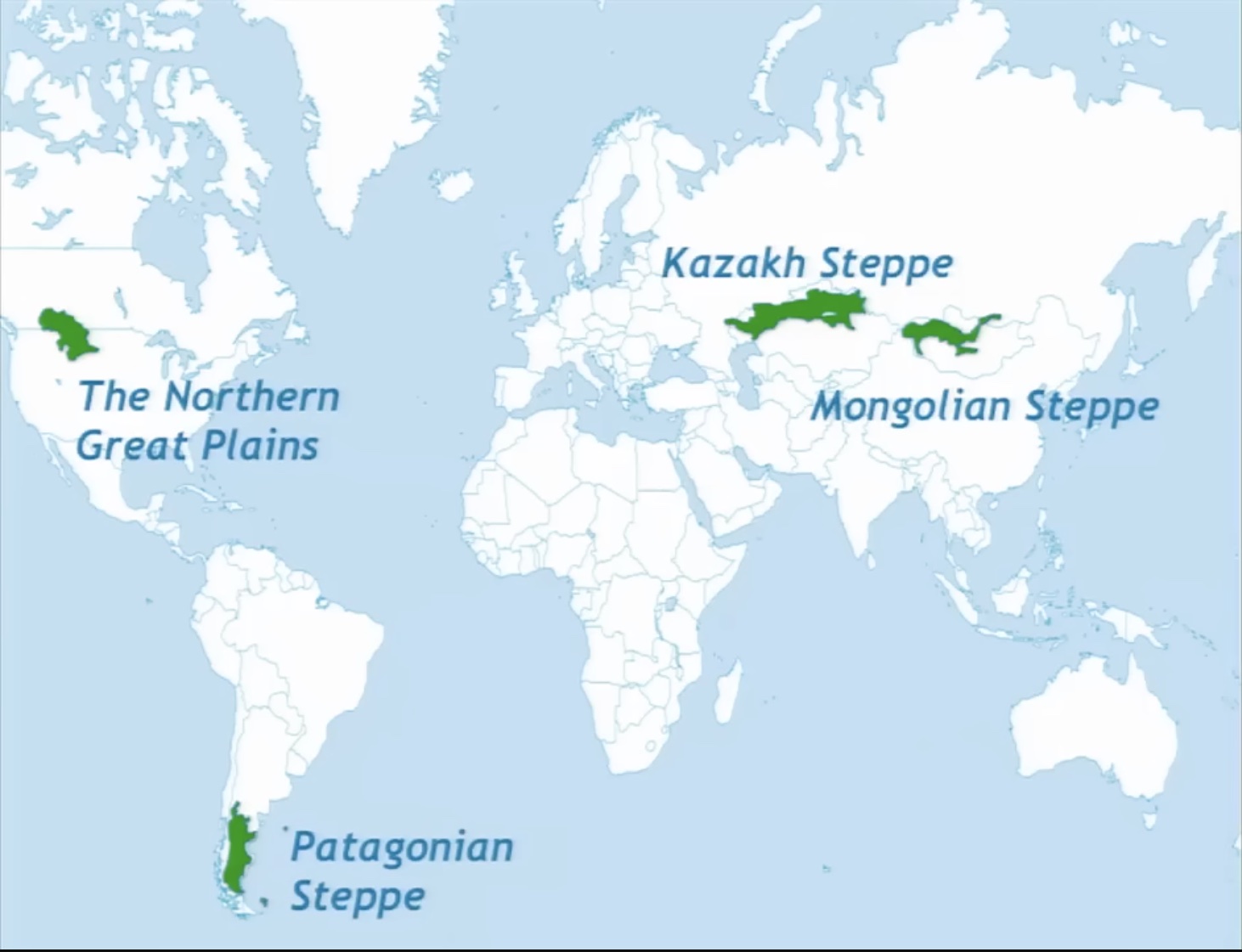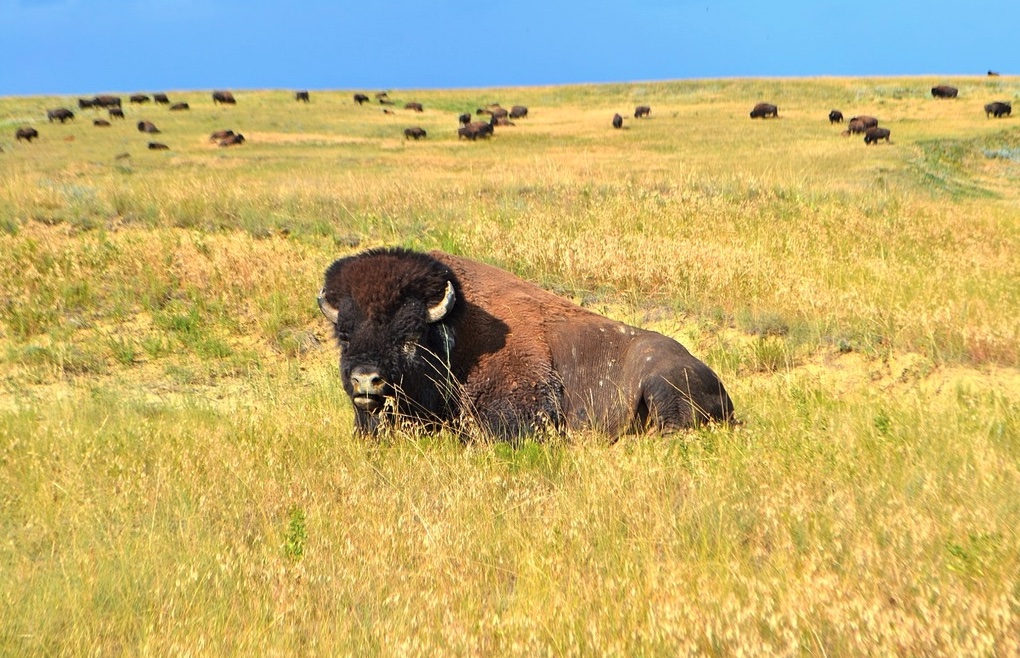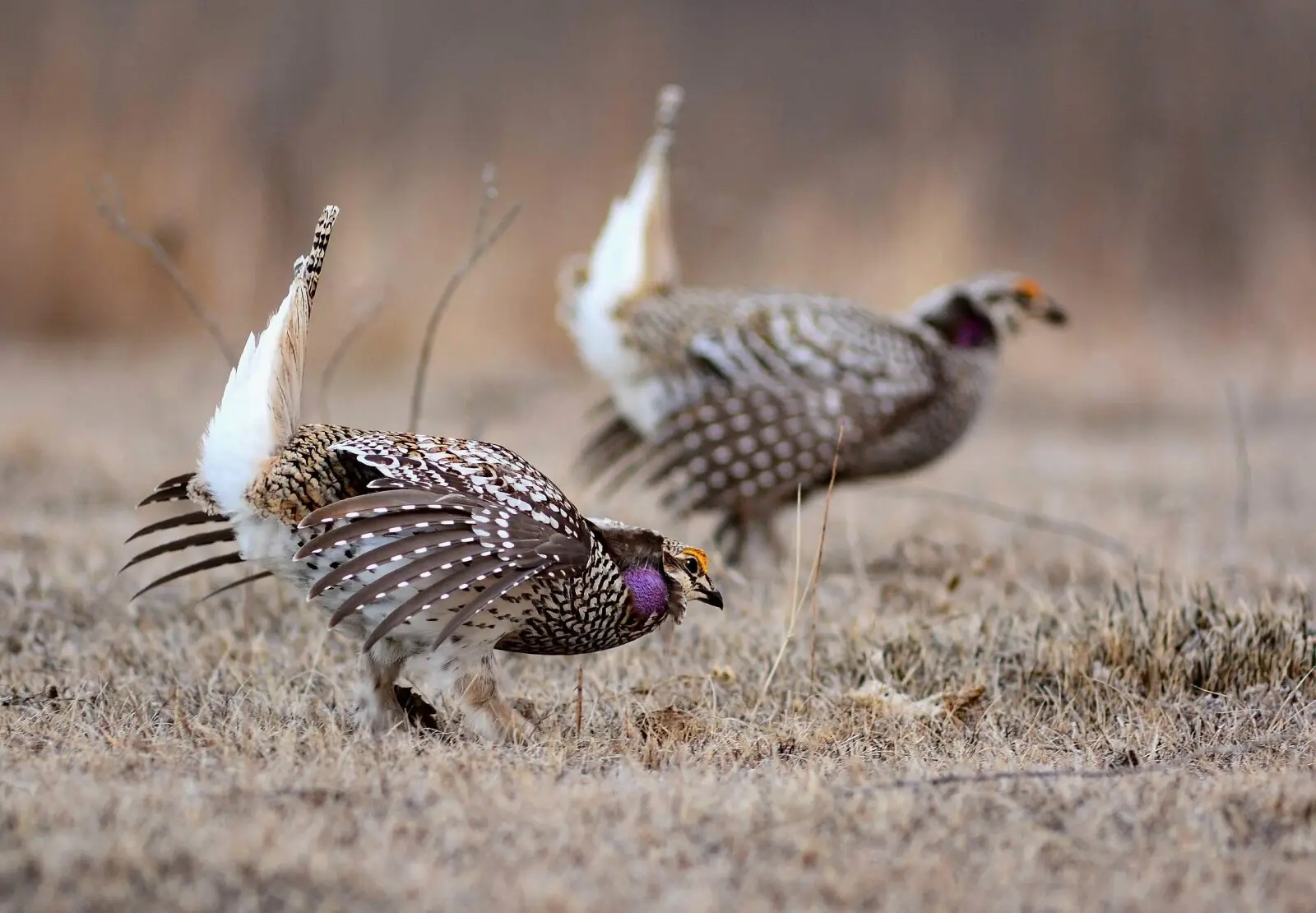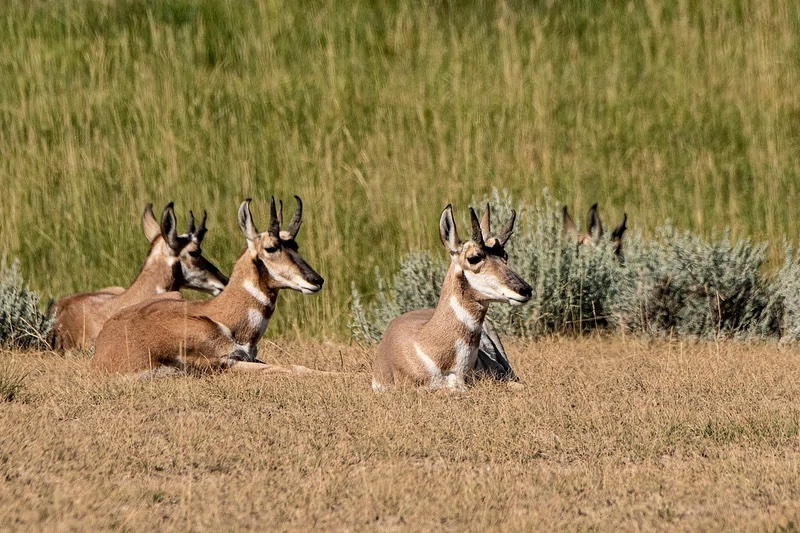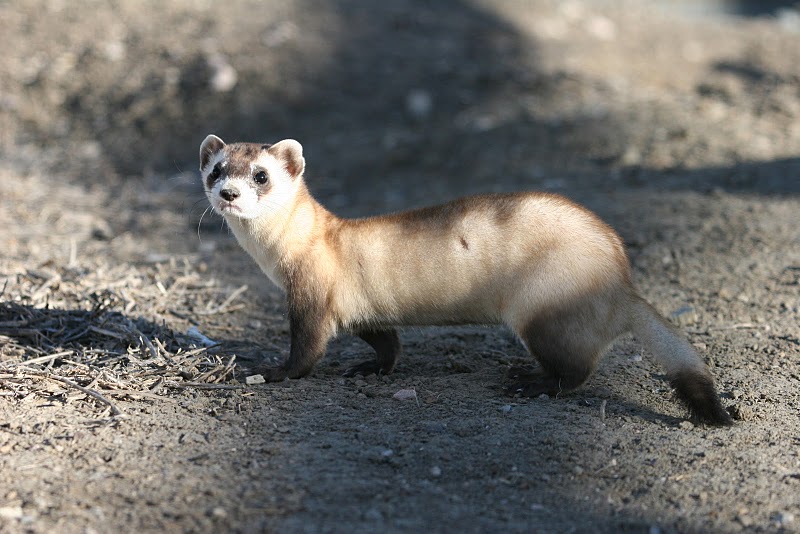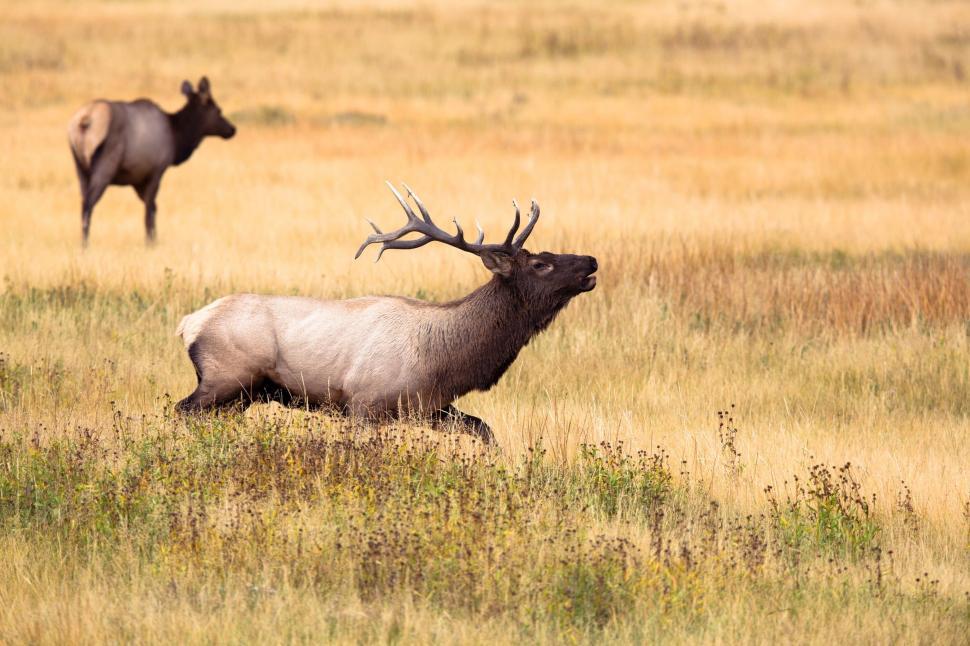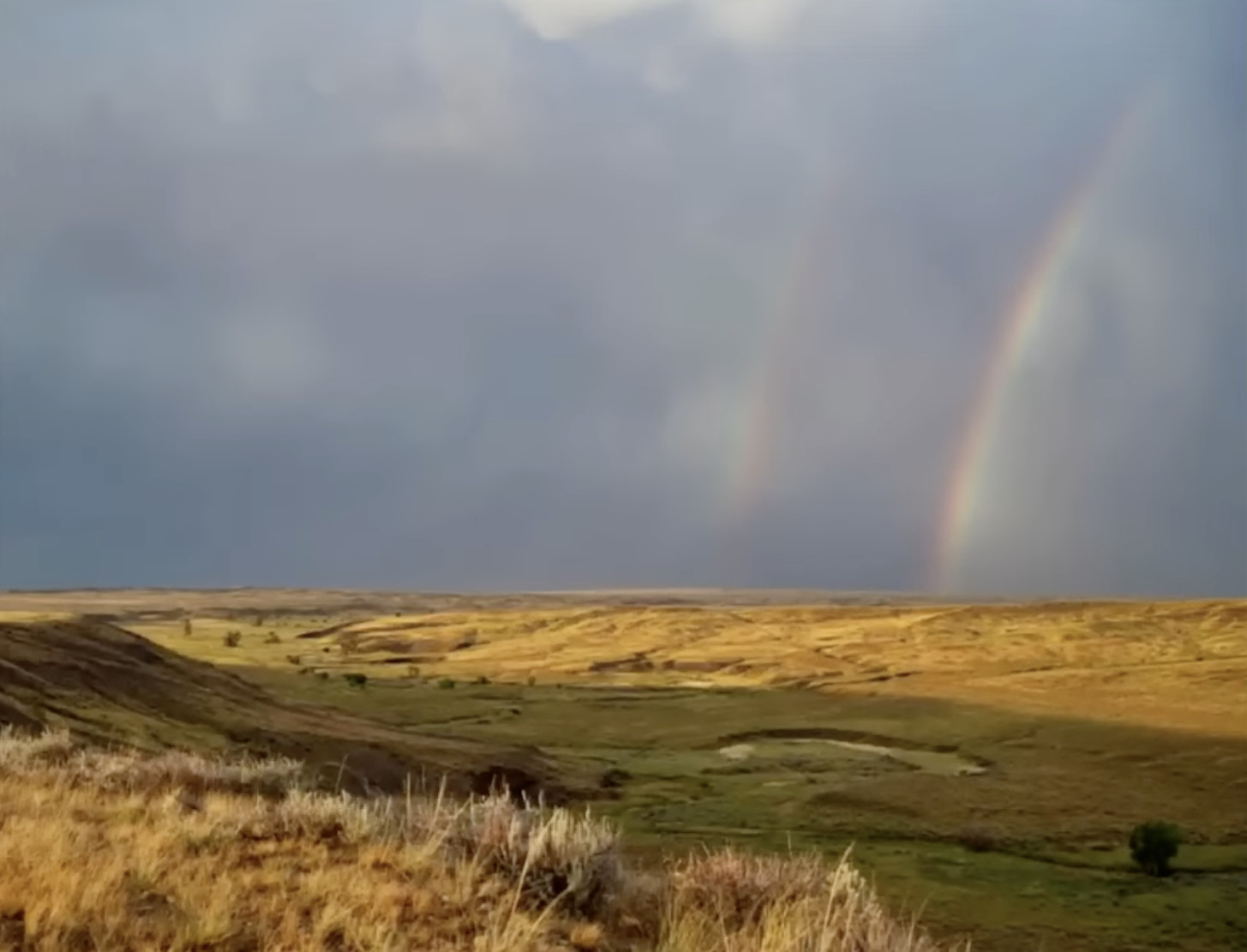
The American Prairie Reserve is a private, non-profit organization that is working to restore and protect the prairie ecosystem in north-central Montana. America’s Great Plains once possessed one of the grandest wildlife spectacles of the world, equaled only by such places as Africa’s Serengeti. The Great Plains of Montana are often referred to as the “American Serengeti”.
Large, intact prairie grasslands throughout the world have dramatically declined. There are only 4 places left on earth to do something of the scale of the American Prairie Reserve: The Patagonian Steppe, Kazakh Steppe, Mongolian Steppe, and The Northern Great Plains. A steppe is a vast, treeless grassland biome characterized by a semi-arid climate and high carrying capacity for wildlife. The Northern Great Plains of Montana represented the “best” opportunity in the world for creating a prairie grassland reserve.
The American Prairie Reserve is currently 3.2 million acres in size. That is comparable to the size of Yellowstone National Park(2.2 million acres) and Glacier National Park(1.2 million acres) combined. For perspective, that is roughly the size of the state of Connecticut. It is the largest wildlife reserve in the lower 48 states. It is aiming to reach 10 million acres.
American Prairie’s mission:
- Conserve the temperate grassland ecosystem: They aim to restore and connect enough land to allow natural ecological processes to thrive.
- Create the largest nature reserve in the continental United States: This reserve would encompass millions of acres and serve as a refuge for wildlife and people.
- Restore biodiversity: Their goal is to bring back a full range of native species that once thrived in the region.
- Collaboration: They work with public and private landowners, as well as indigenous communities, to achieve their goals.
- Public access: They believe people should have the opportunity to experience the beauty of the restored prairie.
The reserve was founded in 2004 by The Nature Conservancy and the American Prairie Foundation. The reserve is located in the Judith Basin, which is a region of rolling hills and grasslands that was once home to millions of bison. The reserve is working to restore the prairie ecosystem by removing invasive species, restoring native grasses, and reintroducing bison and other native wildlife.
The Nature Conservancy determined in 1999 that the northern Great Plains were the most viable for restoring the region’s habitats and conserving the existing diversity of plants and animals. The upper Missouri River and its banks within the Charles M. Russell National Wildlife Refuge (915,814 acres) had been designated a National Wild and Scenic River.
The relatively pristine condition of the land and the diversity of wildlife species north of Charles M. Russell National Wildlife Refuge was identified as a top priority for grassland conservation. The adjacent 377,000 acre Upper Missouri River Breaks National Monument was created in 2001 with public lands that were mostly already managed by the federal government. The combination of existing public land combined with private philanthropy was used to create the American Prairie Reserve.
One of the primary goals of the American Prairie Reserve is to restore the biodiversity that once defined the Montana plains. The reserve’s management employs a multi-faceted approach that includes habitat restoration, reintroduction of native species, and the establishment of conservation partnerships with neighboring communities. Efforts are underway to bring back iconic species such as bison, pronghorn, elk, and even black-footed ferrets, all of which play vital roles in maintaining the delicate balance of the ecosystem.
The bison that once roamed freely here were largely wiped out over a century ago. To reintroduce bison with the most relevant genetics, the American Prairie Reserve partners with Elk Island National Park in Canada. Elk Island National Park protects descendants of the Pablo herd, one of the largest groups of bison that survived the near-extinction event. By carefully selecting and relocating bison calves from Elk Island, the American Prairie Reserve is ensuring their reintroduced herd carries the genetic legacy of the Great Plains bison. This “bison across borders” initiative is a crucial step in restoring the ecological balance of the American prairie.
As of October 2023, there are over 1,000 bison on the American Prairie Reserve. The reserve’s bison herd is the largest free-roaming herd of bison in the United States outside of Yellowstone National Park. The American Prairie Reserve’s goal is to establish a heard of 5,000 bison.
The Bison Range, formerly known as the National Bison Range, serves as another protected habitat in western Montana for American bison and other wildlife species. It was established in 1908 by the U.S. Federal Government. It covers an area of approximately 18,800 acres and has approximately 350 to 500 bison.
As a comparison, the population of bison in Yellowstone National Park varies between 3,000 to 6,000 and there are estimated to be around 2.2 million head of cattle in Montana.
The American Prairie Reserve is a working landscape, and the bison herd is managed for both conservation and economic purposes. The bison provide a source of income for the reserve through hunting and bison products. The reserve also offers educational programs and opportunities for visitors to experience the prairie ecosystem.
The reserve is improving public access and enjoyment of this unique natural habitat. Recreation opportunities including fishing, birding, hiking, paddling, and cycling. Various camping options are available on the reserve. The reserve has established huts and campgrounds including some less remote for RV access. The reserve offers access points to state and federal public lands through its deeded lands, some of which were previously landlocked and unavailable. These public lands were previously surrounded by private land so although technically owned by the public, they were unavailable for public use until the adjacent ranches were acquired for the reserve. The public lands are subject to state and federal hunting and camping regulations for the respective governing agencies.
The American Prairie Reserve is a unique and important project that is helping to restore the prairie ecosystem and conserve bison. The reserve serves as a model for other conservation projects around the world and is yet another example of why Montana is such a special place.
To learn more, visit: https://americanprairie.org/

